Japanese sweets, mochi, wagashi
Omiyage: The Ultimate Guide to Souvenirs from Japan
Linh Le
Posted on September 29, 2022
Share:
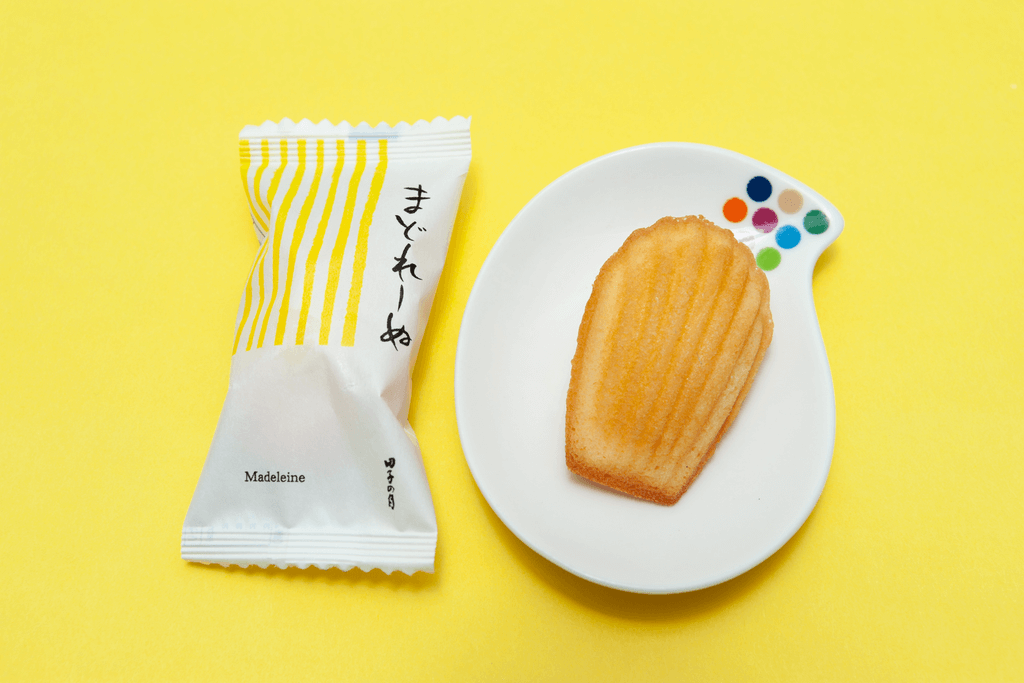
“Omiyage”, or souvenirs from Japan, are very popular. Not only do they represent the “giving and receiving” culture of Japan, it’s also a major part of the tourism history. Let’s take a closer looks at why omiyage is important to both local and international tourists.
A Deeper Meaning Behind “Omiyage”
Omiyage (お土産) is a combination of two kanji: “土 – Earth” and “産 – product”, which means a typical product, a speciality of a region. It is easy to confuse omiyage with souvenir in English but in reality omiyage and souvenirs are quite different.
It has become a common practice in Japanese culture to buy omiyage as gifts from their travel destinations, then give them to their family, friends and loved ones. Although there’s not a specific price range for omiyage, the makers usually pack it carefully for the recipient’s convenience.
The “local” element is a very important part of omiyage that distinguishes it from “souvenirs” in general. Thus, omiyage is usually snacks, sweets, and other local foods. This because different regions in Japan usually have their own unique flavor and preference on food. Their meibutsu (名物) or speciality, is available at their local gift shops, especially at train stations.
Want to try out popular Japanese omiyage but cannot make it to Japan? Let Sakuraco help you out! Sakuraco delivers traditional Japanese snacks, teas and sweets, from local Japanese makers directly to your door, so you can try out the best taste from different regions of Japan at your convenience!
The Practice of Buying Souvenirs
On the contrary, souvenirs are general physical objects that remind you of the place you have visited. Thus, many people buy souvenirs to keep for themselves or give to others if they want to, and moreover, souvenirs do not necessarily need packaging.
When you give someone an omiyage, it says to them, “Here’s something special from the place I went to. I wish you could have been there as well.” It can also serve as gratitude for taking care of someone’s home, or doing other favors while they were away.
The culture of buying omiyage can be a challenge for some tourists, since it can be costly. However, omiyage play a special role in Japanese culture, as they are given to help strengthen relationships between people. Those who receive an omiyage will eventually to return the favor.
Here are some suggestions for popular omiyage from around Japan.
Tokyo-Tokyo Banana
For many foreigners, Tokyo Banana is like a souvenir in Japan. Tokyo Banana is a very cute banana-shaped soft orchid cake. The outer shell is soft and spongy and inside is a sweet and rich cream filling with banana flavor.
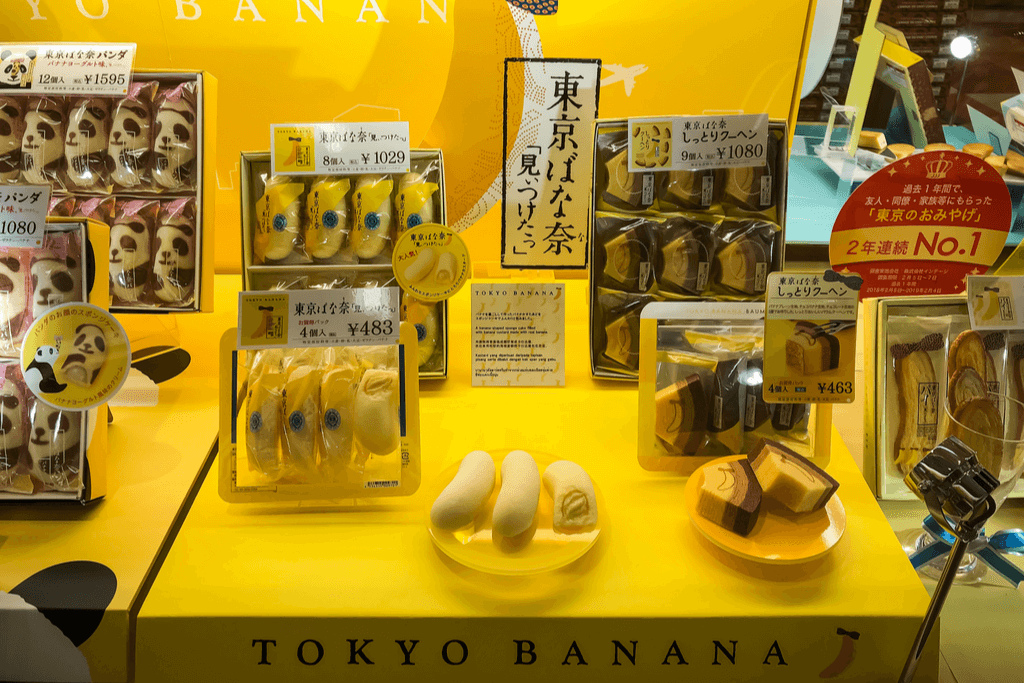
The first version of Tokyo Banana had a banana flavor, but later versions are also very unique with flavors like caramel, milk, egg, honey or maple leaf.
Hokkaido-Shiroi Koibito and Rokkaitei Marusei
Hokkaido is famous for its dairy products, including delicious, high-quality confectionery. One of Hokkaido’s most popular snacks is shiroi koibito – a cookie with a white chocolate filling in the middle.
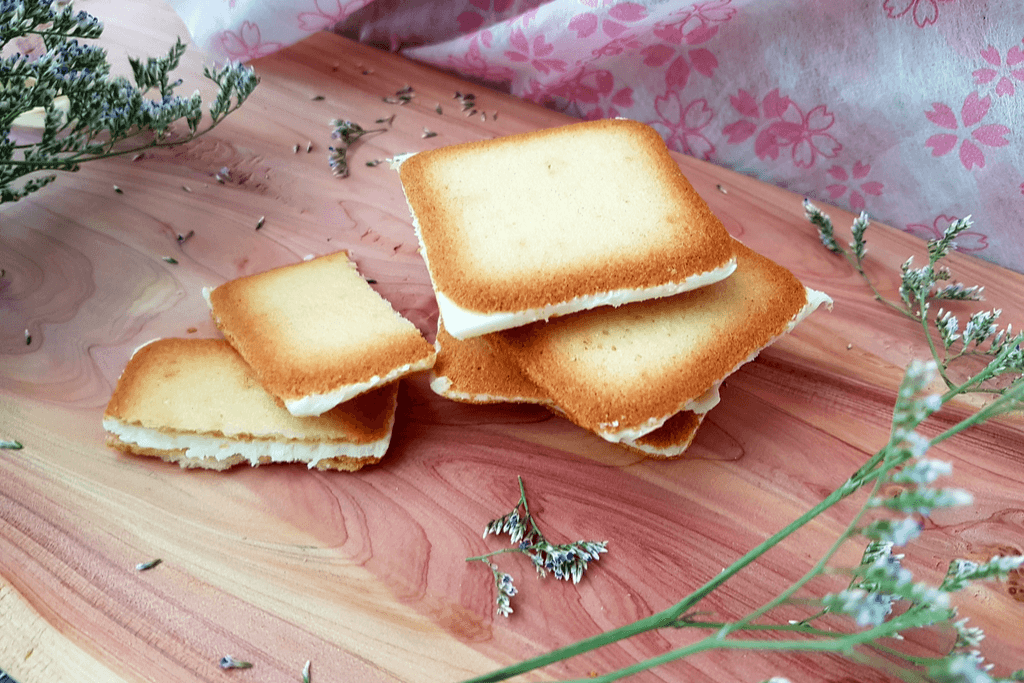
Besides shiroi koibito, the Rokkatei Marusei butter cookie is also on the list of the most popular souvenirs from Hokkaido. Unlike shiroi koibito, the crust from the Rokkatei Marusei brand is softer. The filling inside is cream and raisins, making the perfect combination. Both of these cakes are quite creamy. However, it has a moderate sweet taste, that goes well with tea or coffee.
Okinawa-Chinsuko Cookies and Beni-imo Tart
One of the most staple omiyage of Okinawa is the traditional chinsuko cookies. This cookie comes from the Ryukyu Kingdom (1429-1879) and the members of the royal family ate it on special occasions. The cake has a sweet taste, made from flour, sugar, and pork fat, so it is quite rich and is best enjoyed with tea. Chinsuko has various flavors such as pineapple, chocolate, purple sweet potatoes and especially Okinawan sea salt. The combination of the salty taste of Okinawa sea salt and the sweet taste of the cookie itself will create a unique and exotic taste.
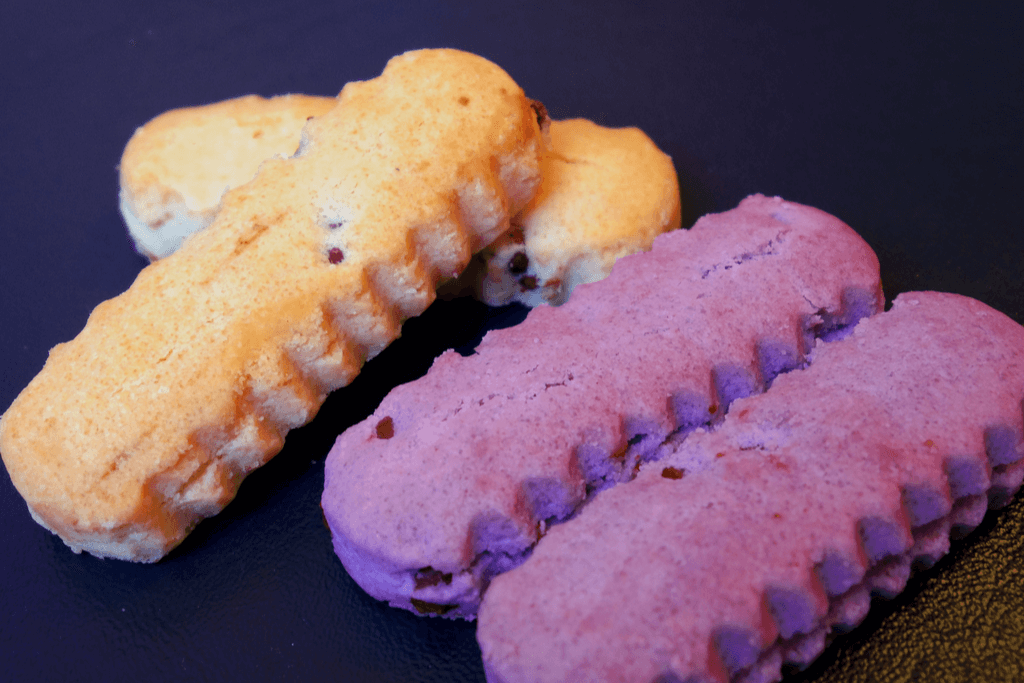
In addtion, purple sweet potatoes are another Okinawa’s specialty and a famous one is the beni-imo (sweet potato) tart.
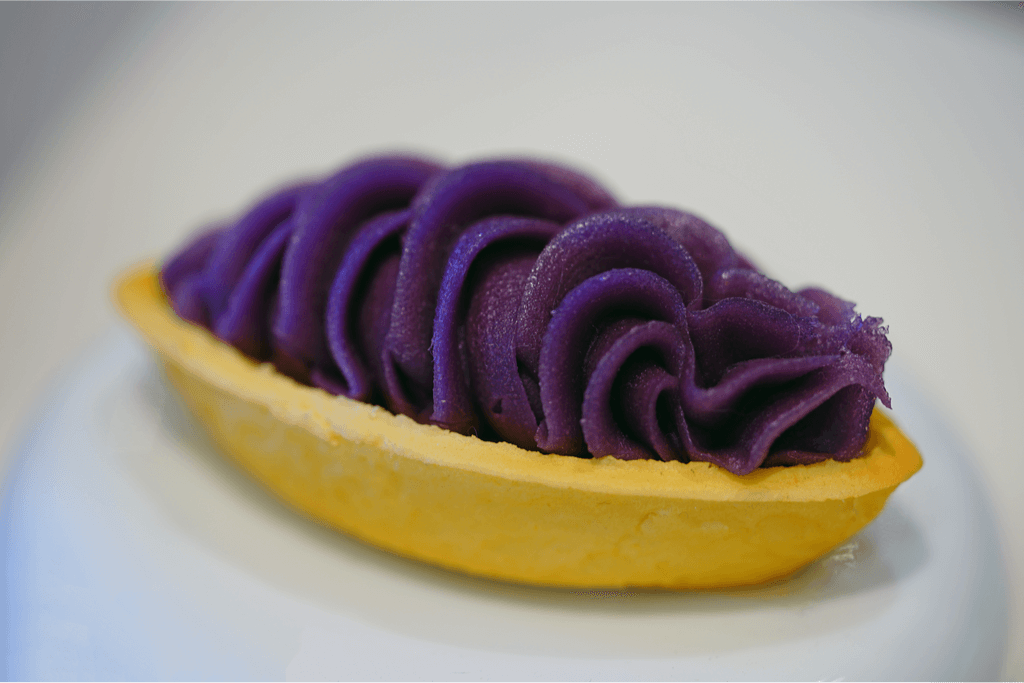
The base of the cake is made of high-quality sugar and milk butter and has a quite crispy texture. The filling on top is made of purple sweet potatoes, giving it its naturally rich color. The sweet taste of potato and the mildness of the cheese in the crust makes the perfect combination that everyone is sure to love.
Osaka- 551 Horai Nikuman and Rikuro Ojisan Cheesecake
Osaka is famous for its nikuman (meat buns) from 551 Horai. The filling inside is made of simple ingredients such as pork and onion. Then the cooks add the brand’s exclusive seasoning, creating a distinctive savory taste unlike other regular buns. The nikuman of 551 Horai are so popular that there is always a long line of waiters in front of the store.
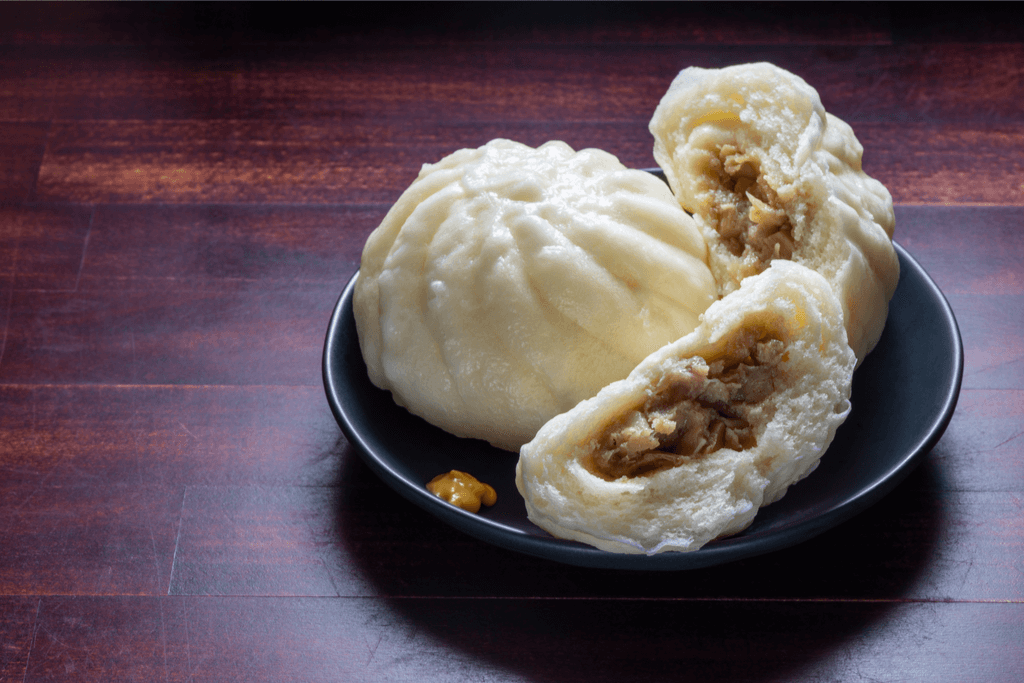
Osaka is also famous for Rikuro Ojisan cheesecake. It is one of the most popular cheesecake brands in Japan. The cake is famous for its soft and smooth texture. On top of that, the bakers make it fresh in the store! Take a bite and you’ll feel the aftertaste of cheese and milk butter melting on the tip of your tongue.
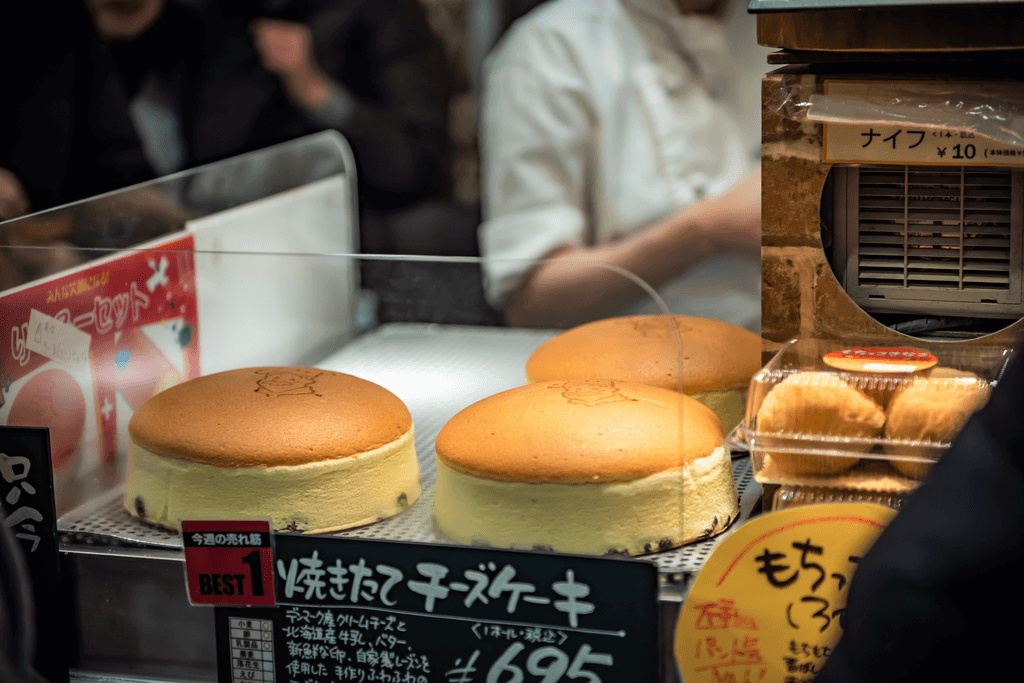
Kyoto-Cha no Ka Cookie and Yatsuhashi
Kyoto is “the heaven of matcha.” So, if you’re a fan of matcha, or Japanese green tea, then the famous cha no ka green tea cookie. The most famous one is from Kyoto’s Kitayama MAILRANCHE.

The bitterness of Uji green tea pairs well with the sweetness of white chocolate inside. This makes it perfect for those who don’t like overwhemingly sweet snacks.
Yatsuhashi is also one of the most popular specialties in Kyoto. There are two basic types of yatsuhashi: fresh and baked.
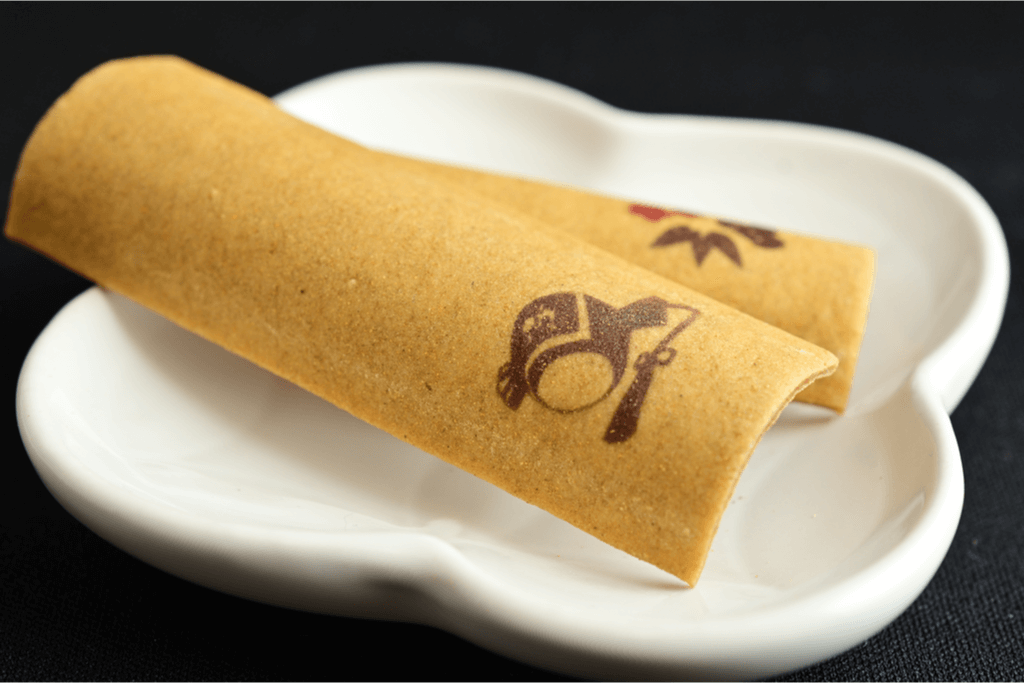
The fresh yatsuhashi is soft and flexible, with a mochi-like crust made of glutinous rice flour and cinnamon powder. The filling inside comes from Kyoto’s finest Ogura Daigon red beans. On the other hand, the baked yatsuhashi is crispy with a cinnamon flavor.
Fukuoka-Hakata Torimon and Niwaka Senbei
When it comes to Fukuoka in Kyushu Prefecture, we can’t help but talk about Hakata Torimon. Hakata Torimon has a shape similar to a small dumpling placed in the palm of one’s hand. The cake has a soft, flexible crust like mochi with finely ground green beans combined with high-quality cream and butter to create a perfect taste.
In addition to, Hakata Torimon, Niwaka Senbei is also a must try omiyage when you go to Fukuoka. This rice cracker is inspired by the traditional Japanese musical mask Hakata Niwata to take a shape like a mask with drooping eyes. Not only does it have a unique shape, it is also has a crispy texture and a rich taste of eggs and milk.
Have you ever received any omiyage from Japan? Do you have any favorite omiyage of any prefecture of Japan? Share with us in the comment below.

Discover authentic flavors with Sakuraco
Get Sakuraco 

Discover authentic flavors with Sakuraco
Get Sakuraco 
Related Articles

Hatsumode: Why Is It Japan’s Most Important Tradition?
Hatsumode is the first visit to a shrine or temple in the New Year in Japan, and it is one of the country’s most important traditions. Every year, millions of people participate, demonstrating the profound connection between this custom and daily life.

Japanese Fish Bait: The Beautiful Art of Kebari
Kebari are traditional hand-tied flies used for freshwater fishing in Japan, especially in mountain streams where small insects form the main diet of native fish. Instead of bright plastic lures, kebari use feathers, thread, and natural materials to create subtle movements in the water.

Japan Holidays Guide: Relax, Explore, and Delight in Festive Fun
As the year draws to a close, everywhere buzzes with preparations for the holidays, and Japan is no exception. Despite the cold winter weather, you can feel warmth in the scenery, decorations, and festive activities across the country. Let’s explore the unique experiences of holidays in Japan that many people dream of enjoying at least once in their lifetime!

Tokyo Gardens: Five Beautiful Traditional Japanese Gardens to Visit
Tokyo gardens offer a relaxing escape for visitors looking to get a breath of fresh air. However, Tokyo has more than just the typical gardens we see in the West. Let’s explore five traditional Japanese gardens and what makes them unique!



